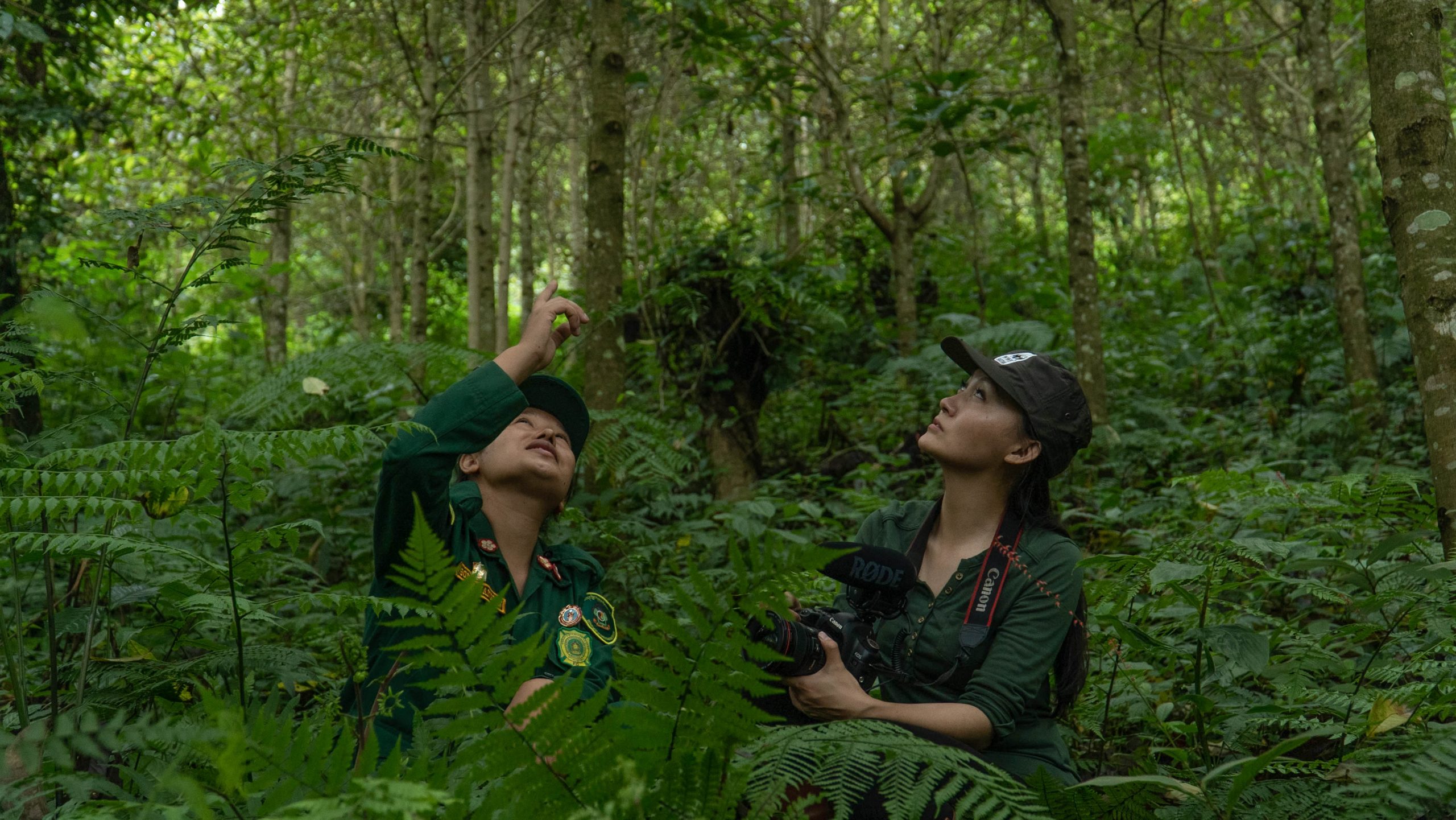
Dagana District, Southcentral Bhutan
Welcome to Dagana.. Perhaps one of the most unheard of dzongkhags I’ve ever visited. I’ve had the good fortune of visiting all districts in Bhutan (except Pemagatshel) & I must say Dagana feels different. Perhaps it is its unique ethnic diaspora spread across the district’s hills and mountains.
Dagana is home to three ethnic groups namely the Khengpas, Lhotsams and the Dagaps who live closer to the main Dagana town area. As you drive from Dagapela to Dagana, you’ll see an interesting transformation of architectural styles from the beautiful Lhotsham mud houses with huge balconies to the more northern Bhutanese traditional houses all in the same region.
The orange orchards and the steep terrace rice fields are quite the beautiful sight as well. Dagana is also a rich biodiversity hotspot and you can spot hornbills and other bird species here too. But my favorite part was visiting Dagana dzong. This post alone isn’t enough to describe the beauty and wonder of this small yet majestic structure. Did you know that Dagana Dzong was the last fortress to be built during Zhabdrung’s time? The Dzong also has a very unique statue of Zhabdrung that I’ve never seen before.
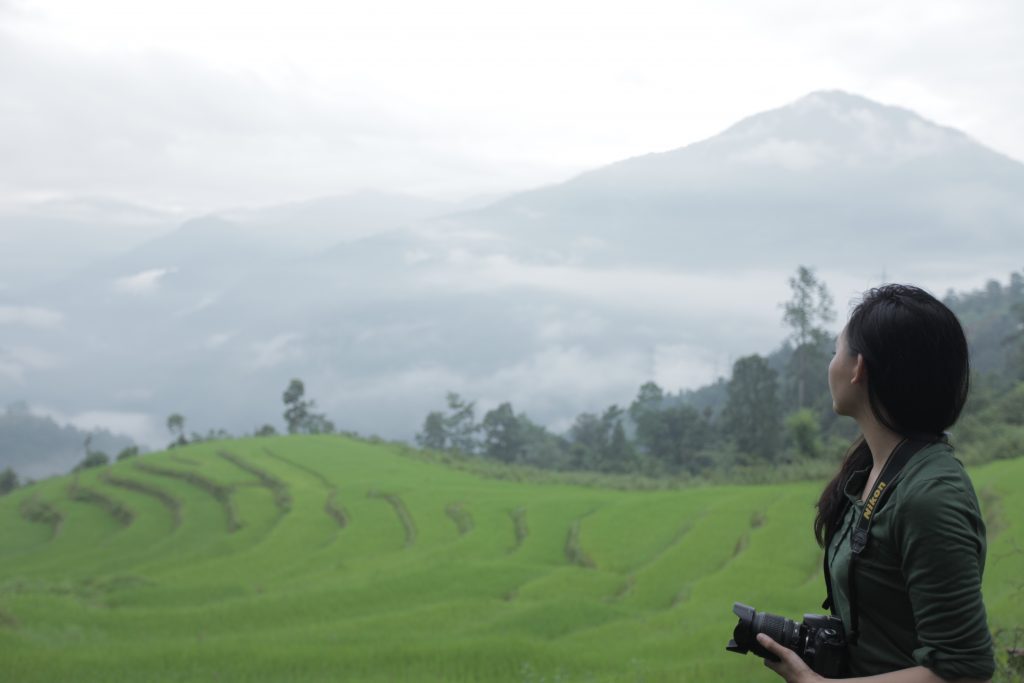
What is Community Forestry?
Community Forest (CF) is the concept of participatory forest management, whereby the chunk of government reserved forests is handed over to the group of local people for ownership, sustainable utilization and management. Today, Bhutan has over 800 CF projects spread across the country now going well beyond just forest conservation.
I was quite embarrassed to admit this at the beginning of the trip, but I had no idea what Community Forestry was. Why were there two senior Forest officials on the trip? What was WWF’s role in this project? (We’ll get into that later) I’m sure most of you don’t know about it either so here’s a quick introduction on CF in Bhutan.
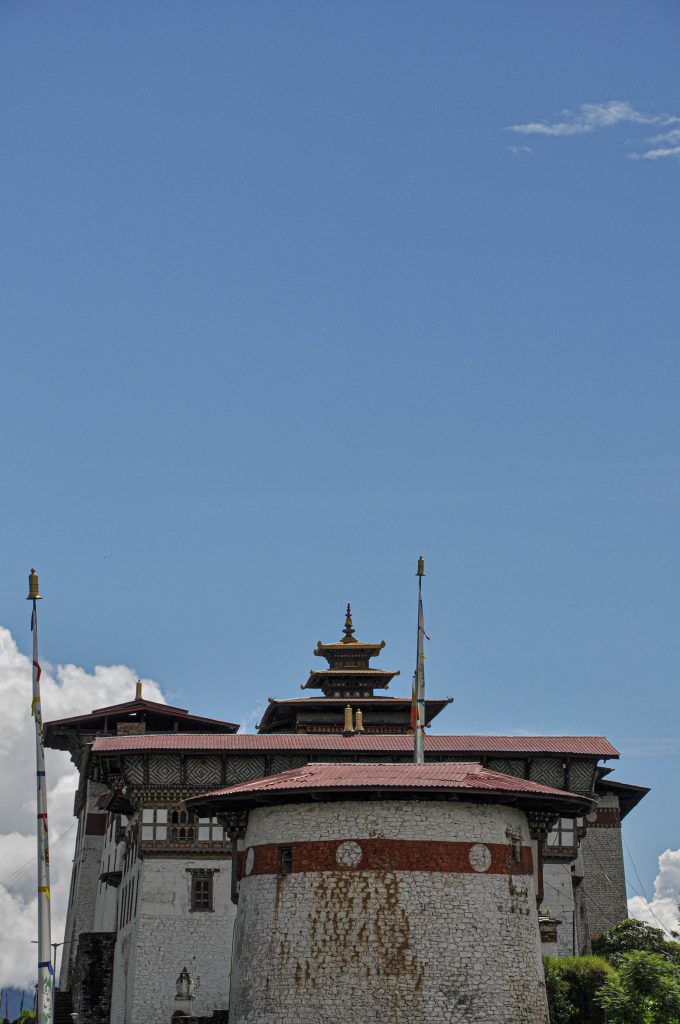
In 1997, when the Department of Forests and Park Services (DoFPS) under the Ministry of Agriculture and Forests (MoAF) first initiated the establishment of Community Forest (CF) at Dozam under Mongar Dzongkhag, people were apprehensive about such new ventures.
In rural Bhutan, people view the forest and other natural resources as more of a natural occurrence and not something that requires management or ownership. It took the department officials quite an effort to create awareness, educate people on understanding sustainability. But slowly; the programme picked up and gained momentum. More and more villagers were willing and came forward with proposals to manage the State Reserve forests near their villages. They ultimately realized that by protecting nearby forest resources, they have more to gain than lose.
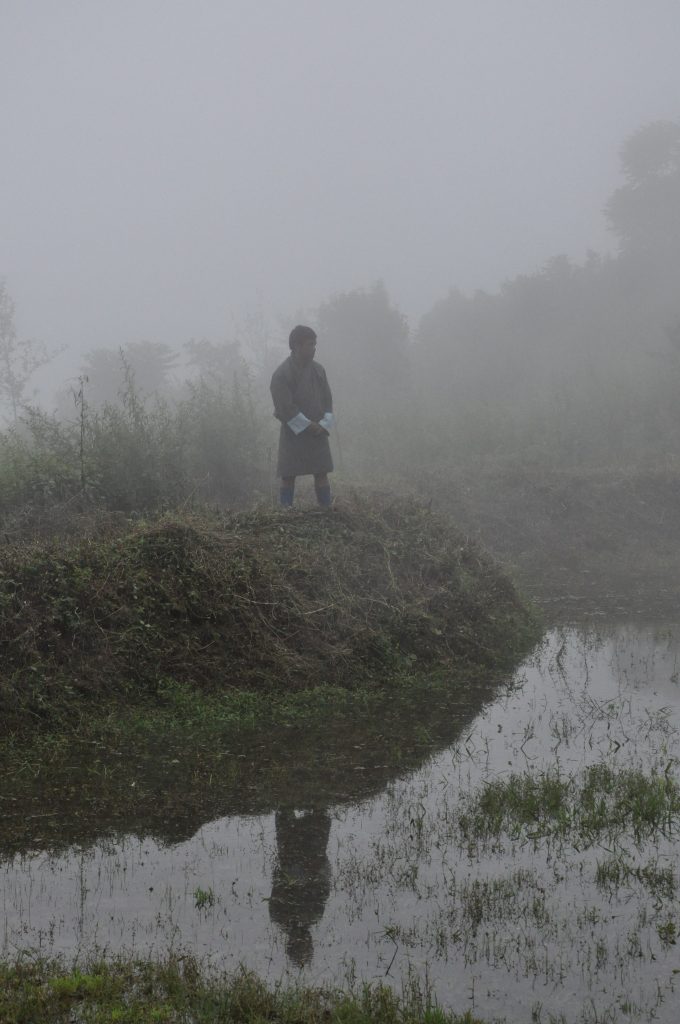
Norbuzingkha Community Forestry
We drive across small fields of cardamom, grazing goats and curious children peeking through houses along the road. This small village above Dagapela is Norbuzingka (field of treasures) During the short drive we saw trees of bananas, pears, oranges, lemon and passion fruit in people’s backyards. “They make good money selling cardamom here,” says Tashi sir from WWF “but it’s also a lot of work”. But behind the abundant fruit trees, Norbuzingka has a real environmental issue on their hands.
“The village elders describe the region as an abode of lakes,” says Norbuzingka’s chairperson as he takes us to see their community forestry project. “Now our water sources are drying.”
Meet 37 year old Ganesh Gurung. Besides heading his community’s CF group, Ganesh is pioneering a unique initiative to conserve water after he realized the crisis of his region. “I availed a kidu permit to get some timber some time back. But when I went into the forest, I found proper timber. I suddenly felt quite sad and thought about how bad the situation would get during our children’s time. So I started doing some research on google and youtube to learn forest conservation and soon realized the importance of watershed management.”
Ganesh had located an old empty pond area that he filled up with water diverted from a nearby stream and rainwater to help create an artificial recharge well for ground water recharge. With everything that Ganesh was passionately describing, I felt clueless as to how this helps with water and forest conservation, “What is groundwater recharge Ganesh sir?” I sheepishly asked and he went on to explain this.
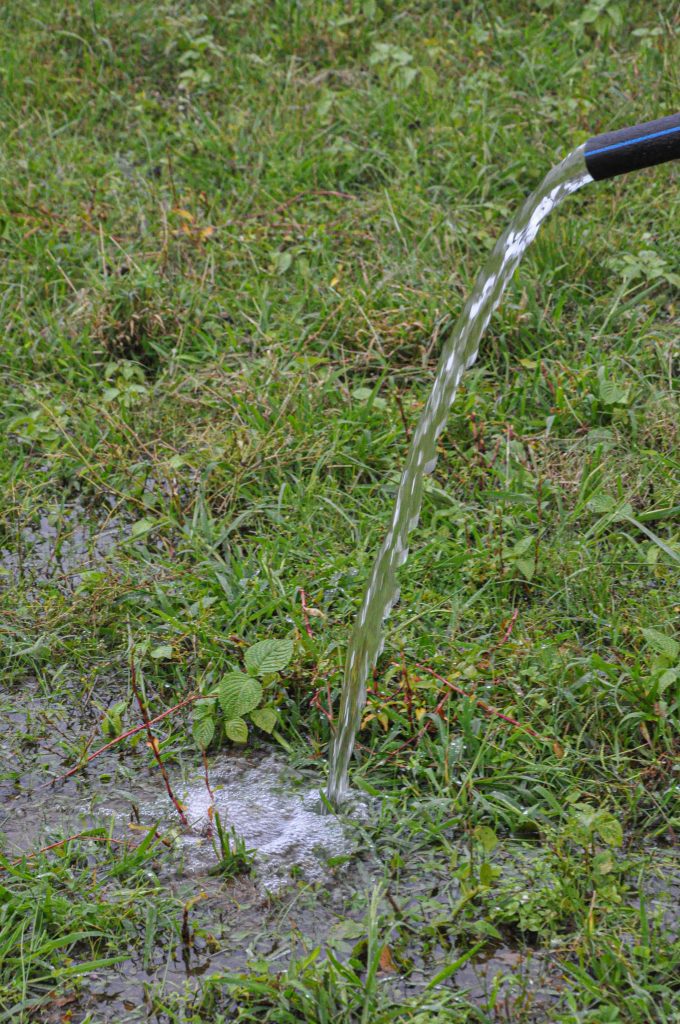
Groundwater recharge is a water management practice that helps water move from the surface to become groundwater, below the plants’ roots. Recharge can be impeded somewhat by human activities including paving, development, or logging. These activities can result in loss of topsoil resulting in reduced water infiltration, enhanced surface runoff and reduction in recharge.
With the help of the internet Ganesh researched and adopted methods to solve Norbuzingka’s water issues which he says is still a trying task. “I want to encourage my community to work together on this CF project so we can turn this region back into the abode of the gods that once lived here. Water is everything. Without water there’s no agriculture, no household and no community.”
Champ Tree Plantations in Gesarling
About an hour away from Dagapela, you’ll come across a beautiful plantation of trees in Gesarling Gewog where 15 acres of Champ (Michelin Champaca) trees are planted. This is the Saeer Tsho (golden lake) community forest. The Chairperson, secretary and treasurer of the CF greet us with a gigantic fresh cucumber (they serve this in villages during a hot day) and take us to see their growing Champ trees.
Champ trees are used mostly as wood for house construction and although they don’t cost as much as Teak, the wood is ideal for the community’s own consumption. “It was challenging doing this project as mostly the champ tree saplings had to be brought in from nurseries in Gelephu,” says Forest Ranger Karma Kelzang of Gaserling.

“Due to the altitude difference many failed to grow properly and this often discourages people to do volunteer work at the CF. “Ranger Karma doesn’t shy away from talking about the issues with CF. “CF projects succeed if the community works together. But our communities are changing, youth are leaving villages and since CF work is mostly voluntary, many members choose their own domestic work rather than working together at the CF.” Ranger Karma also shares that since the tree plantations take decades to bear rewards, the work can really test their patience..
After shooting the Champ tree plantation, a young Ranger sat down with me to look at some pictures in my camera. Ranger Sonam Yangden shares that it was her uncle that inspired her to join the Department of Forest and serve as a Ranger. Although her work was more in line with human and wildlife conflict, we talked more about the life cycle of champ trees and how long it would take for them to be ready for timber. “It’ll be ready during their children’s time,” she said.
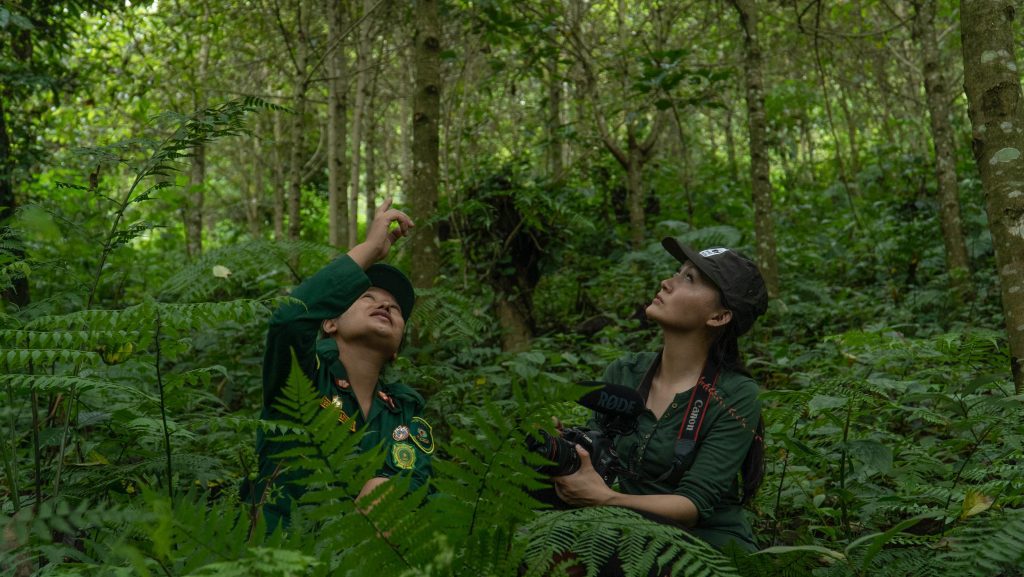
Meet the Forest Rangers
For years Forest rangers have worked closely with community members to help educate and spread awareness on forest conservation. But senior Ranger Tashi sir also explains that it’s so much more than that.“Rangers roles are of two types. One is service delivery to public like land inspections for issue of forestry clearances for any proposed activities i.e. land substitution, road construction, house construction, power lines, telecom lines, etc. marking of trees, creating awareness on waste management, fire management, etc.
Second type is more of a policing job like patrolling, comprehending offenders, cordyceps duty in the north, border or covid duty in the south, forest fire suppression, plantation creation, fishing patrolling, hunting and poaching patrolling, etc.”In his almost 30 years of experience, Tashi sir says that he’s seen communities learn to work together to understand holistic progress that secures a better sustainable future for their children, and rethink their roles in protecting their communities’ natural resources.
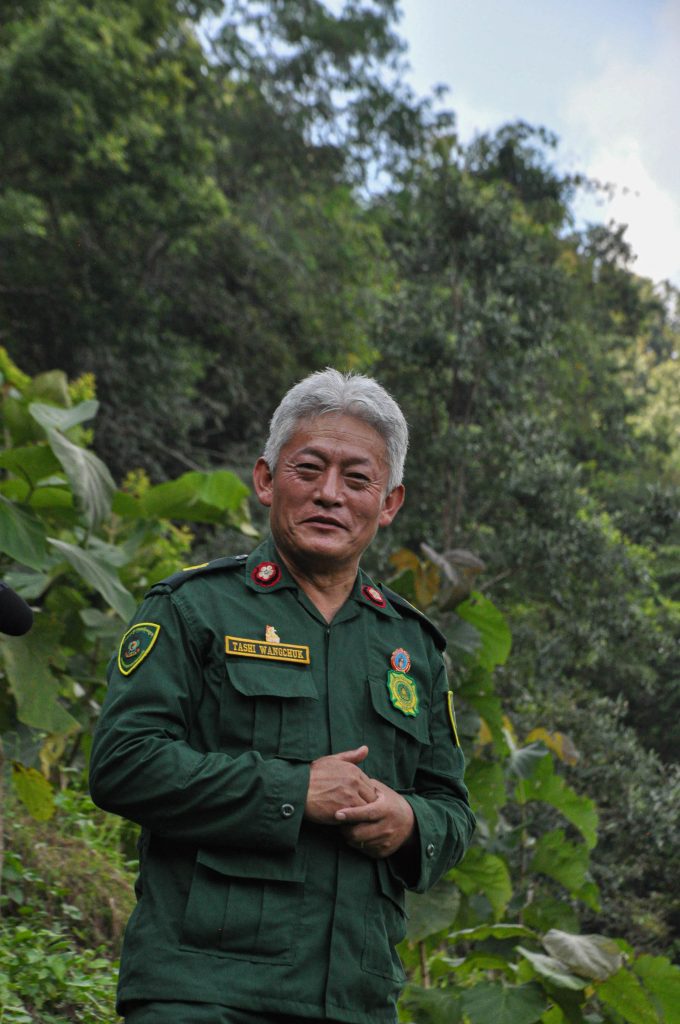
Meet Deputy Chief Forest Officer Tashi Wangchuk. He joined his department in 1995 and has almost 30 years worth of knowledge and experience. As I followed him around the plantation unit, he would spontaneously share interesting mini factoids about plantation and CF projects in general. “When we talk about forest management, we have to think at least 15 years down the line. That is the minimum years that we- when we talk about forest management and silviculture. So it is not something like agriculture products, we cannot harvest the trees within 1 or 2 years. The wait is long but worth it.”